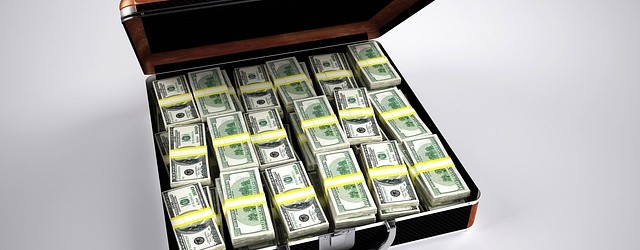
Uncategorized
What $1 trillion looks like
The video begins by showing $1 million in $100 bills: a small bundle.
$100 million fits on a standard shipping pallet.
$1 billion fits on 10 pallets.
$1 trillion fills an entire warehouse with pallets
This is relevant because in three years, Federal spending jumped almost exactly $1 trillion, or 36.7%.
spending
2007 $2.72 trillion
2010 $3.72 trillion
revenues
2007 $2.56 trillion
2010 $2.16 trillion
deficit
2007 –$160 billion
2010 –$1.3 trillion
Here are the deficits of the past three years, and the estimated shortfalls for fiscal years 2011 and 2012.
Note that the recession supposed began in mid-2008 and ended in August 2009.
2008: $458 billion
2009: $1.4 trillion
2010: $1.3 trillion
2011: $1.5 trillion (est.)
2012: $1.6 trillion (est.)
That’s $5.8 trillion borrowed and spent after the recession officially ended.
Debt held by the Public jumped up 80% from $5 trillion in 2007 to $9 trillion in 2010.
The U.S. Gross Domestic Product (GDP) in 2010 was almost precisely the same as it was in 2007: $13.363 trillion in 2007 and $13.382 trillion in 2010.
In a nutshell, here’s what happened: as overleveraged households and businesses found they could no longer borrow $1 trillion extra a year, then the Federal government stepped in and borrowed and spent that $1 trillion a year to replace the private borrowing which vanished.
Tax revenues fell $400 billion a year as incomes declined and tax cuts were extended. Add $400 billion to $1 trillion in additional spending every year and you get a structural deficit of $1.4 trillion–and this doesn’t even count off-budget borrowing for bailing out Fannie and Freddie and for war expenses.
Add the off-budget borrowing and the structural deficit is 12.5% of GDP. There is only one comparable period of Federal borrowing and deficit spending: World War II, which ended in less than 4 years.
Here we are, borrowing 12% of GDP every year for four years, with no end in sight. All we’re doing is propping up the Status Quo.
The private economy cannot support an additional $1 trillion in borrowing every year. Housing assets and household earnings continue to decline.
Suspended Animation
This is why I feel like the U.S. economy and society is in a weird state of suspended animation: nobody is moving, we’re all just waiting for something to happen. We know the present isn’t sustainable, but we go through the motions of phony “reforms” and “trimming the deficit” as if another 1,000 pages of “reforms” will fix what’s broken in the economy or that trimming $50 billion from $1.7 trillion deficits will actually matter.
It is a very peculiar era, and one that I feel will end in 2011 with an “unexpected” crisis. Deep down, we know the crisis has just been pushed forward.
The key takeaway is the current Status Quo requires an extra $1 trillion to be borrowed and spent every year. The private sector cannot support this additional debt, and at some point the Federal government will be unable to fill this gap with “cheap” borrowed money.
It will then have to fill the gap with expensive borrowed money that will crimp other spending, or let the economy shrink to its true, self-sustaining level.
A Beneath the Surface Trend: De-Globalization
One trend that I think will gather momentum is de-globalization. Globalization (ownership of overseas assets and long supply chains) seems triumphant at the moment, but it feels as if the apex has been reached and the forces of de-globalization are strengthening.
I suspect we shall see more overseas assets expropriated or seized by nation-states and more controls imposed on capital flows.
The idea that “investing in international stocks” is some sort of low-risk hedge to domestic stocks will prove to be highly risky. All global markets are highly correlated, so the hedge is illusory. As de-globalization picks up, then the risks of overseas investment will become apparent.
This is a long-term trend that is currently below the radar screen for most conventional analysts.
From Left Field:
An amusing bit of dark humor: The stages of creation (stick figure illustrations)
An alternative to Initial Public Offerings (IPOs are profit machines for Wall Street):
Crowd-Funding Sites Eye Boom
An Asian-American writer on Asian stereotypes and the “Bamboo ceiling“:
“It is a part of the bitter undercurrent of Asian-American life that meritocracy comes to an abrupt end after graduation.”
A gripping series of photos of the tsunami-devastated areas of Japan, two months after the quake/tsunami.
You may have seen some of these images of nuclear tests, but some will probably be new to you.
Social Media joke of the week:
I told my doctor, I think I’m addicted to Twitter. His response: “I’m sorry, I don’t follow you.”
Thank you for reading–
charles

